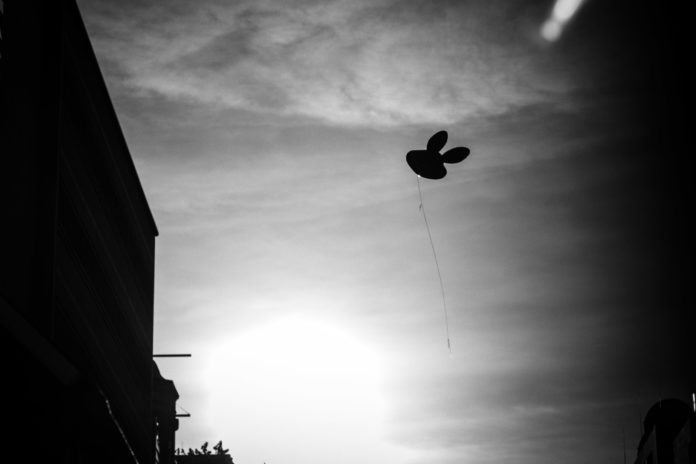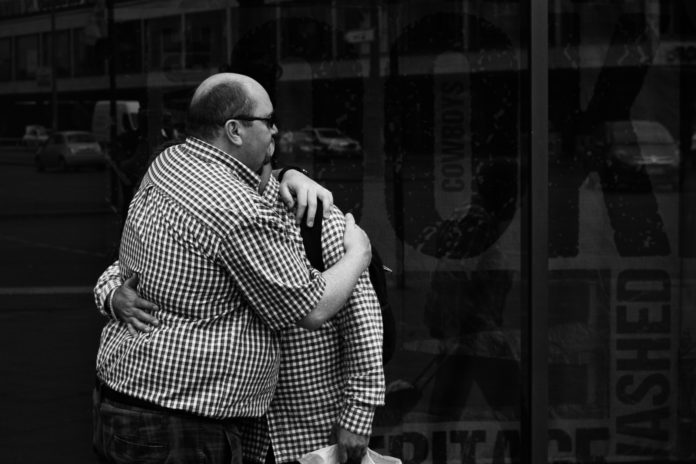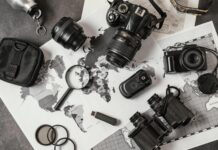Black & White Photography is one classic form of displaying the world. Although the reality is vibrant and colorful, reducing it on the monochrome tonality can bring out a whole different character. Were early photographers forced to present their pictures in black & white due to the technical limitations of their film, is it a choice of style in modern days. There are a lot of reasons to still do digital photography in Black & White.
It does reduce the picture to its story and the content of the image. Instead of being distracted by vibrant colors, the viewer is able to focus more on the story and what is being told. Often times, this is accompanied by very stark contrasts and the light plays a main role in these black & white pictures.
To recreate some of the most iconic pictures, here are 20 Black & White Photography tips that are based on my personal experience.
1Search for the Light

When Shooting in Black & White, one of Your most concerns should be where the light is. In monochrome, there aren’t any colors and the light replaces this characteristic. Therefore the light becomes one of the subjects and main character of the image. To create powerful photographs in Black & White, follow the light first and then search for suitable subjects that can fill the frame. Sometimes even the light itself is already so impressive that it doesn’t need any other element in the image to be interesting enough.
2Create Contrast

It is not the light that is directly responsible for creating an interesting image. The contrasts are what makes draws the viewer’s attention. Just like anything in life, the contrasts are the spice and for good black & white pictures we should seek and embrace the contrast. Therefore I find it the best to shoot on bright and sunny days. Searching for additional elements like bridges can help to embrace the contrast even more. From a technical point of view, I recommend metering on the highlights. Even if the shadows might be very dark, You are still able to recover them in post-processing, while preserving the information in the highlights.
3The story is in focus

Monochrome has always that sense to me that it is a lot less distracting. There is less “noise” in the picture in some way. What becomes more important is the story and as a photographer, we should search for the story first. Telling a story in a single frame is not easy though and it takes years or even decades to develop the right instincts to tell a story in one picture. Things that are helpful are gestures and human interaction in general. As social creatures, we naturally try to figure out what the persons are interested in and what their conversation is about. In general, try to give hints without exposing the true story completely. This gives the viewer a kind of puzzle that he has to solve and makes it more interesting.
4Don’t shoot in color

Some photographers like to mix their work. Someday they shoot in Black & White and on the other they revert to color photography. I believe to master one or the other You have to focus on kind only. Both, color and monochrome photography are very different and although they seem very similar they require unique sets of minds. Shooting in color means that You are looking at vibrant images and the colors have to make sense. Other things like the story or the content can of lesser importance if You are able to create visually pleasing images in color. We are creatures of habit and switching back and forth doesn’t happen instantly. Therefore it is better to spend some time exploring only one kind of photography to master it than to be a worse photographer in both.
5Watch Black & White pictures

Not only photographing in color can distract You from becoming a better Black & White photographer, also watching at colorful images can give You a false sense and mix up Your mind. To create better black & white photographs one should also only consume these kinds of images. However, I would advise You to look left and right and not only to intake one single genre. Apart from Street Photographers that shot in Black & White or created outstanding photodocumentary work like Robert Frank did, there are photographers like Helmut Newton or Peter Lindbergh, that embraced the monochrome features in their portraits of people. Often times they were playing with the light as if it would be their second model that they would interact with. Analyzing these images will benefit You too.
6Buy classic books

One great thing about Black & White photography is its long history. The very first images have been created in monochrome versions and we are able to learn from all the great masters of photography. From Henri Cartier-Bresson to Robert Capa, Ansel Adams and Sebastiao Salgado, we are able to learn from their characteristic photography style and how they mastered black & white pictures. Their images might not be crystal clear and the subjects not really modern, but that doesn’t deduct anything from their educational value. If You want to be a better photographer, You should have a look at their books or exhibitions and benefit from their knowledge. It would be a waste to ignore photographers that created historical value.
7Silver Efex Pro

Do You want to create the classic film look but don’t have any experience in analog photography and not even the right camera body? The solution to Your problems aren’t some simple presets, but rather the Silver Efex Pro tool. With that tool, You get access to numerous film simulations that You can change the way You desire. If You compare the grain, for example, it is completely different from the standard grain that can be added by Lightroom. With the film emulations, You get a look that is as close to the film looks as it can be. The tool also includes a lot of films that are even discontinued by now. Or You can preview how the film will look like and decide which role of film You are going to purchase depending on the tool.
8Shoot during the Night

During the night most colors have vanished anyway. If You aren’t in an area that features vibrant neon signs or other bright colorful elements, then monochrome is the best way to capture the night. The atmosphere that You can create is manifold. From a dark night that is surrounded by mythical light, to a rather creative shadow play. There are many ways to use the night for Black & White Street Photography. As a technical advantage, the noise that is created due to the high ISO is less noticeable in monochrome pictures. Although it isn’t as beautiful and characteristical as film grain, it can have an aesthetically pleasing aspect.
9Use a flash

To emphasize the characteristics of the night in black & white photography, You can also use a flash. I created a complete series with a flash and long exposure in Berlin and it was one of the most fun and helpful experiences in becoming a better photographer. What is most important in this kind of photography is seeing the light in the background first. The light in the background is responsible for the light trails in combination with the long exposure. To my surprise, I found it easier to use a flash during the night and people were usually very playful and didn’t react to the flash at all. In combination with the Silver Efex film emulations, I was also able to recreate a more classical film look that even embraces some grain. Doing Black & White Photography during the night has the advantage, that You are able to have complete control over the light and the environment without any disturbing details.
10Negative Space

Less is sometimes more and especially in Black & White Photography, the atmosphere and story can be enhanced by hiding bigger parts of the picture. By showing only some details of the bigger picture and leaving a lot of space in darkness, the viewer has more room for his own imagination. This addition of seemingly “nothing” can direct the focus more on the subject which improves the easiness for the viewer. With the information reduced to a bare minimum, the viewer isn’t distracted by some unnecessary “noise”. Using negative space can also work in color, but if You want to embrace the characteristics of the negative space even further, shooting in black & white will help You a lot.
11Pay Attention to Lines

In monochrome images, the geometry and compositional elements are more emphasized. Since we are more focused on the content, rather than the colors, our eyes more easily notice any flaws in lines or other elements that lead our attention away from the subjects. Therefore, compositional elements like leading lines become important. When framing an image in black & white, keep a very keen eye on the leading lines and the geometrical figures that surround the subject. Often times it can be beneficial to walk to the side or alter the angle of shooting. Thus, the lines will add up and lead to the subject.
12Search for Texture

Black & White photos have a certain tangibility to them. I guess it is derived from the old film, where grain made the photos even more life-like or at least had a feeling as if You could grab the subjects. Especially when doing Street Photography, it is preferable to search for “rough” textures and make them come out more clearly in black & white. Those textures can either be walls, floors, or anything that isn’t perfectly clear. A little roughness works very well in Street Photography. Bonus points are added when You print the picture. Using a thicker paper that has a little texture itself and combining it with a grainy black & white style goes very well together.
13Practice makes perfect

You might be an expert in color photography, but that doesn’t mean that You also mastered the art of black & white photography. Both are very different and require the photographer to think differently. It doesn’t matter how many hours You already invested in becoming a better color photographer. During these hours You only learned the basics of photography that You can carry over, but You need to invest those hours again to master monochrome photography. Go out on the street and don’t be afraid to make mistakes in the beginning. Ahead will lie a long road of work, but You will feel like experiencing photography for the first time again.
14See in Black & White

Humans have a great ability in seeing colors. We are able to detect a range of more than 2.3 million different tones of colors. That might sound impressive, but if we want to master the art of Black & White Photography, we have to forget them for a moment. Instead of seeing colors everywhere, we have to think in shades of black and grey. Seeing the differences in light levels and exposure, rather than colors. This can take a very long time to get accustomed to, but it will help to have a better imagination for the final result. If You are unsure how a picture would look like, You can also change the display of the camera to only show monochrome previews. Over time, this will help You to focus more on the light, which will result in a better understanding of black & white photography.
15Shoot against the Sun

If You are living in an area where You can use the sun to Your advantage there are two basic ways to create more contrast. You can either shoot with the sun behind You facing a darker area. For example, You can photograph facing the entrance of a bridge and wait for people to step into the light, or You can shoot directly into the sun. When facing the sun, You need to make sure that You are metering on the highlights or otherwise the whole picture will be way overexposed and result in a loss of details. Everything that isn’t directly near the sun will be heavily underexposed, but that isn’t a huge problem since You can recover the details during the post-processing. With this technique, You can create a maximum difference of contrast.
16Create Silhouettes

Silhouettes are just a little expansion of shooting against the sun. When You have found something interesting that has a nice form or shape, then You can photograph it in a way that You place it in-between You and the sun. This way, You are creating a very harsh contrast again, but are also displaying a subject who is only visible by its outer shapes. The viewer can not directly see which person is being photographed and can only guess by its form. This can create a lot of interesting stories for the viewer who is able to use his fantasy. When shooting silhouettes, keep an eye on the edges of the subject. Ideally, they shouldn’t be crossed with another subject and melt with the background for example. Usually, photographing from a low angle against the sky is a good option to create silhouettes, that stand out from the background.
17Search for Shadows

Light has a phenomenal impact on Black & White photography. The impact goes so far, that even something mundane as shadows can impose an interesting story. During the early morning or shortly before the sunset the sun has one of the best light that we can capture. The lower angle of the sun also extends the shadows who become even more impressive. When trying to capture shadows, You can focus on trees or other objects that are in front of a wall or another building. Sometimes the street itself can be good enough to draw attention to the shadows.
18Be emotional

Not only the story, also the emotions have a bigger impact in monochrome pictures. To create more emotional photography ourselves, we should be open to emotions as well. As a photographer, we shouldn’t be afraid to feel compassionate with our subjects or have other emotions. A photograph is also often a reflection of the inner state of the photographer. If emotions are being suppressed, it is hard to see them in the pictures. Therefore, the photographer should allow himself to be emotional as well.
19Watch Black & White Movies

Not only photographs but also movies have been created in black & white long before color was introduced. Although we still see a fair share of black & white photographs, it isn’t really popular in movies anymore. As an additional source of inspiration, You should watch some classic movies that are putting an emphasize on the light and darkness as well. The old “film noir” genre provides valuable lessons for black & white photographers. There You can have a look at how silhouettes are created and how a “darker” atmosphere can be created by simple means only. Although there are a few attempts to revive the genre in modern times, most movies are attributed to the 40s and 50s which is the era You should be looking for when searching for some classic inspiration.
20Symmetry and Patterns

In addition to leading lines, other geometricalal figures go very well with Black & White photography too. Symmetrical figures or patterns can be found everywhere in the world. If You can’t find them from afar, getting closer and capturing only the pattern can yield some impressive results. Cross-walks are an often photographed subject and in combination with a person walking by that is somehow connected to the cross-walk You can create interesting juxtapositions.





















